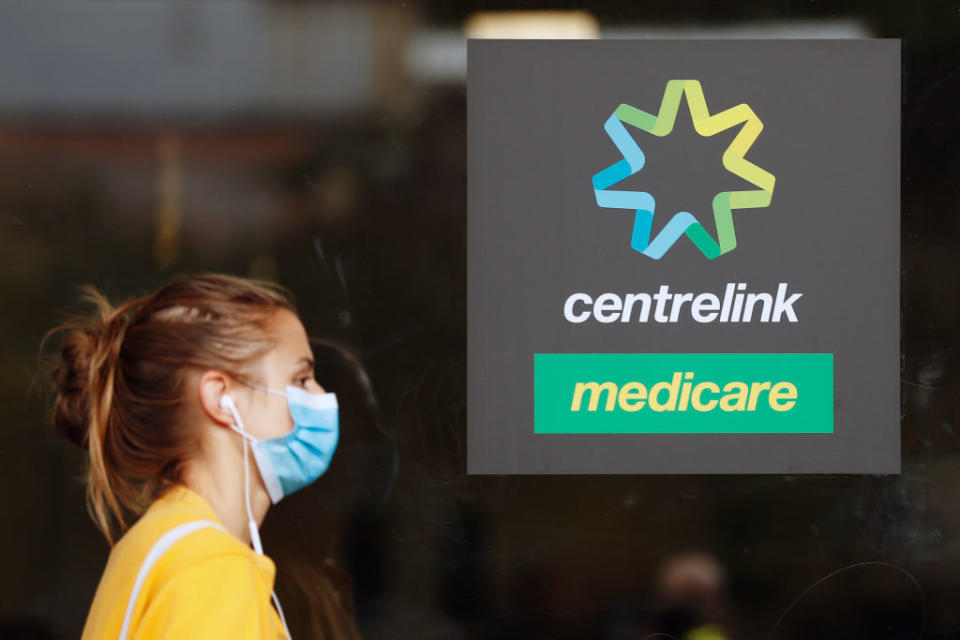How to fix Australia’s labour woes

It remains a mystery if the Morrison government is dragging the chain when it comes to policies to promote business activity and most importantly, job creation.
Just about every economist in the country, including importantly those in Treasury and the Reserve Bank of Australia, are forecasting the unemployment rate to still be around 7 per cent in late 2022, and this assumes that the worst of the Covid-19 health crisis passes in the next few months.
In terms of the most recent data, the labour market remains near its weakest point since the 1930s Great Depression.
In the current Covid-19 uncertainty and fear, the monthly labour force numbers are extremely volatile. In the past five months, there have been huge losses and gains in the monthly unemployment, underemployment and participation data as businesses close, reopen and as JobKeeper payments impact the measures used by the Australian Bureau of Statistics.
More from The Kouk: ‘Action needed now’: As Victoria spirals, policy must change too
More from The Kouk: ‘Deep trouble’: How the government is pummelling house prices
More from The Kouk: Australia’s debt to hit World War 2 high
In July, the number of people unemployed was a record 1,009,400 and there were a further 1,511,000 underemployed. This translates to a 7.5 per cent unemployment rate and a 11.2 per cent underemployment rate.
Making matters worse is the fact that compared with the pre-Covid-19 position, the workforce participation rate is around 1 percentage point lower as people have given up looking for work.
Recessions and depressions have this effect on employment. Businesses unable to make a profit shed staff and do not reemploy people.
And while huge tracts of the private sector are struggling to maintain solvency in the current economic slump, the role of government in supporting the economy and jobs is vital.
Good ideas need to be embraced
There are many good ideas being canvassed for the government to be bold, to generate economic activity and employment.
Investing in issues that will obviously dominate for the next few decades seem the proverbial no-brainer.
Renewable energy, world-best broadband, water security for households, business and farmers, investment in education, skills and training for everyone in the workforce, health care - especially care for older Australians - are all issues that are obvious targets for frankly massive government investment.
Add to that social housing, infrastructure investment and payments to those who need it most can all be deployed to boost the economy in the near term.
Investment in these areas is not only good for Australian society, a well crafted rollout of these policies will see the economy surge and plenty of jobs being created.
At one level, it remains perplexing why the government is not fast-tracking its strategy on these issues. Cost is likely to be a political issue as the budget deficit is hitting 10 per cent of GDP and gross government debt approaches $1 trillion, but these numbers are not all that important right now when the economy is in such poor shape.
The time for worrying about the budget deficit and government debt is not now – it will be an issue for action only when the economy has strong momentum.
Some dumb ideas too
Not all ideas to support the economy are equal.
The so-called bang for your buck in some areas is less than in others.
Fast tracking income tax cuts, particularly skewed towards high income earners is costly and less effective in the task of job creation than other measures.
That is because income tax cuts only go to those with an income and a job and arguably these are not the focus of policies to maximise growth.
Think for example the value of an income tax cut of say, $1,000 a year, for someone earning $200,000 per annum. The impact on their spending would be somewhat blurred by the fact that their propensity to spend that extra $500 is marginal.
Now think of $1,000 a year in extra payments to those on low very incomes – say on the JobSeeker payment. Economic research shows that low income earners will be inclined to spend almost all of that extra money within the economy and this will be a more powerful effect on the economy.
Or if that money was used on subsiding childcare or building desalination plants the impact on jobs and workforce participation would be powerful.
Wages growth at a record low
The other news on the labour market was confirmation that wages growth fell to a record low in the June quarter.
Weak wages are a direct result of the COVID-19 Depression and the severe labour market weakness is and in itself is another reason to expect the economy to be weaker for longer – consumer purchasing power is restricted.
The key issue is the weakness in the economy and the labour market and the need for more government spending.
If that does not materialise and come through soon, get set for high unemployment, high underemployment and weak wages growth for years to come.
Are you a millennial or Gen Z-er interested in joining a community where you can learn how to take control of your money? Join us at The Broke Millennials Club on Facebook!

 Yahoo Finance
Yahoo Finance 